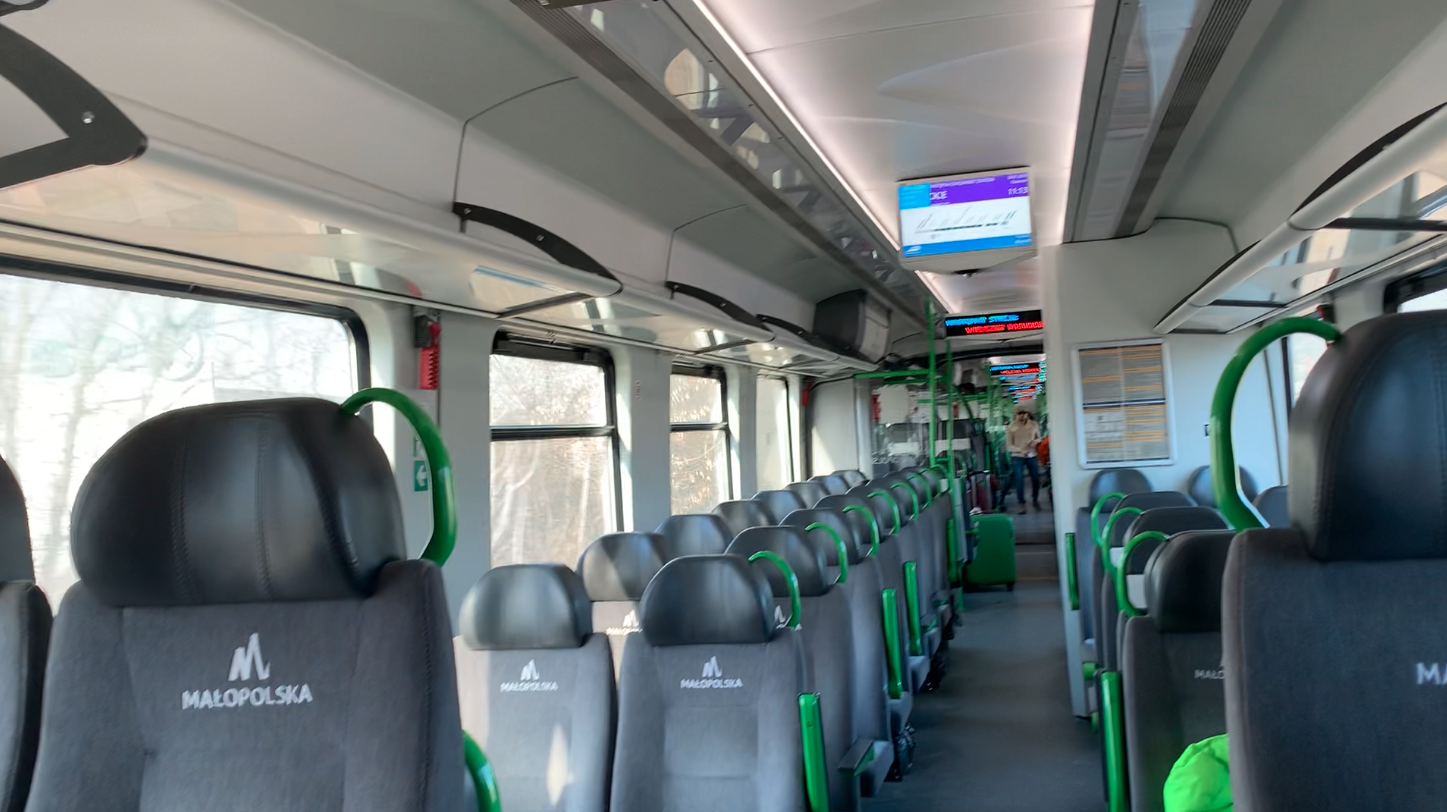Kraków 2025-02-03
Newag Impuls 31WE-034 = EN78-006.
EZT 31WE-034 = EN78-006 is a four-car train built by the NEWAG factory in Nowy Sącz in 2017. The vehicle received the factory number 31WE-034. The train consists of cars: 94 51 2 140 727-0 (PL-KMAL A), 94 51 2 140 728-8 (PL-KMAL B), 94 51 2 140 729-6 (PL-KMAL C), 94 51 2 140 730-4 (PL-KMAL D). On February 15, 2017, the train was accepted by Koleje Małopolskie.
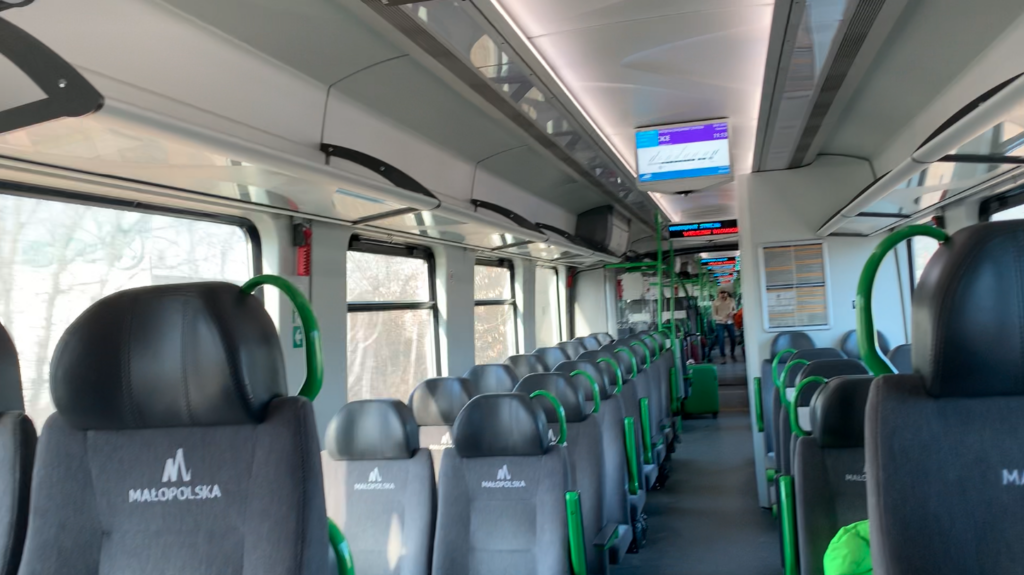
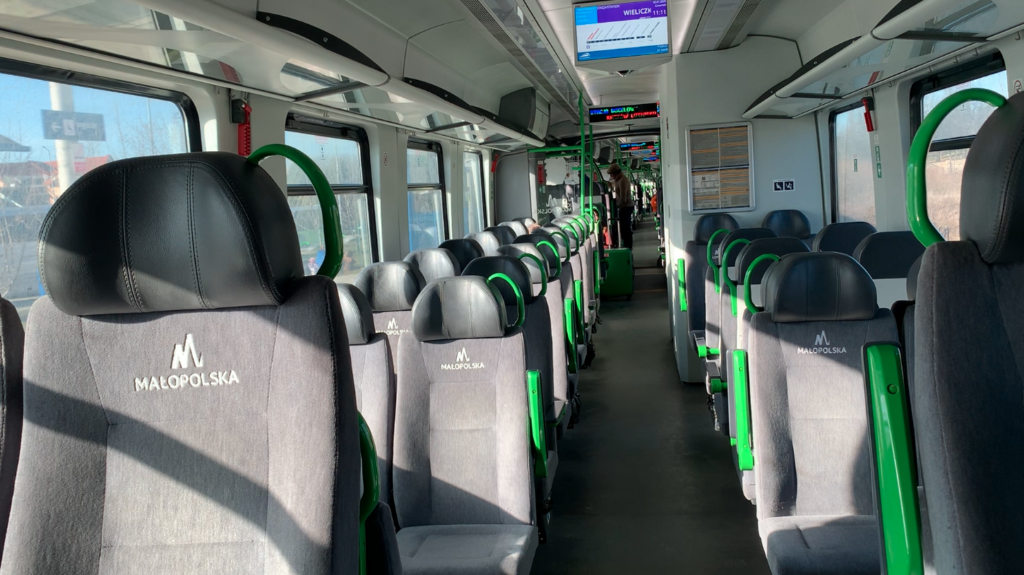
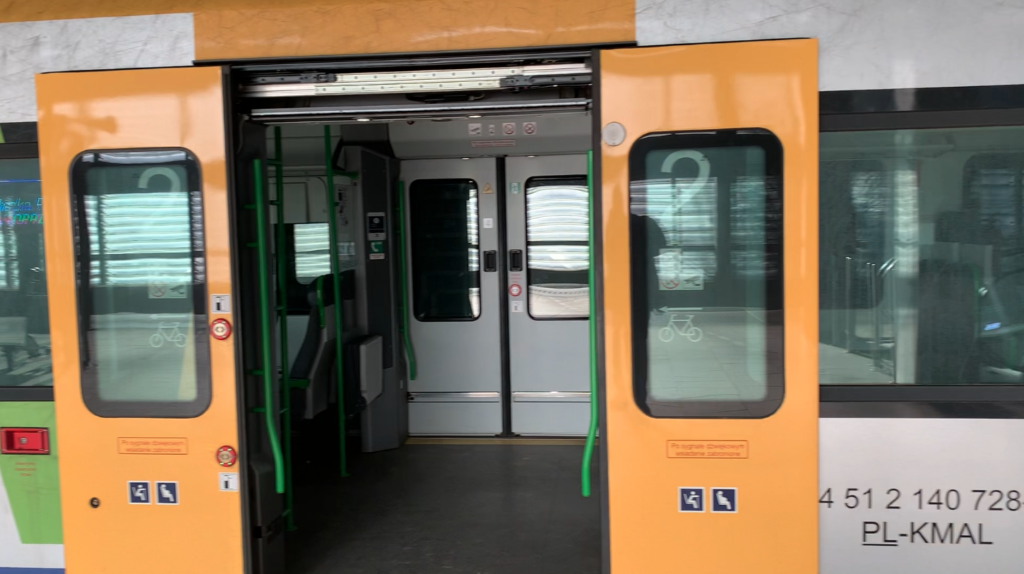
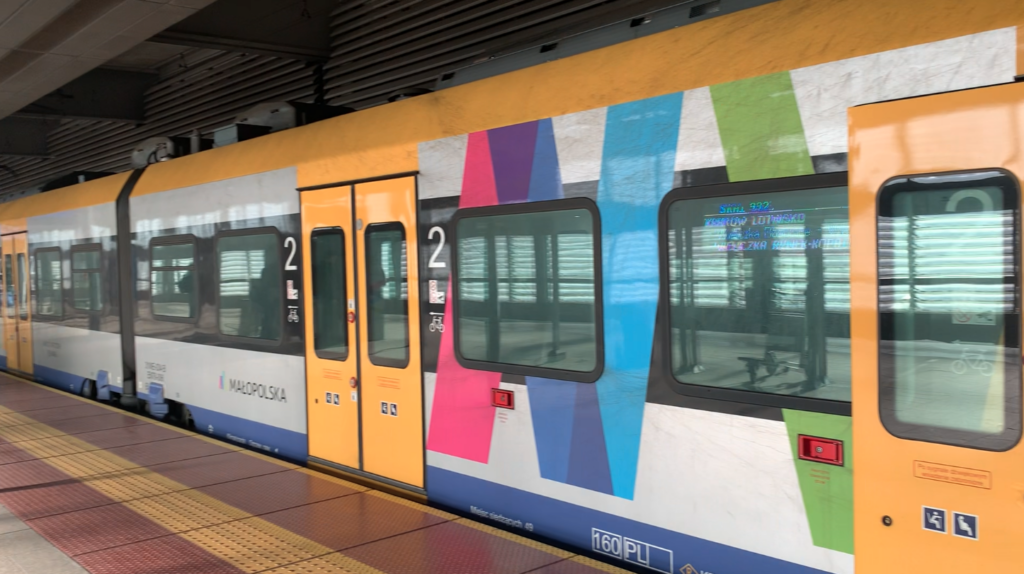
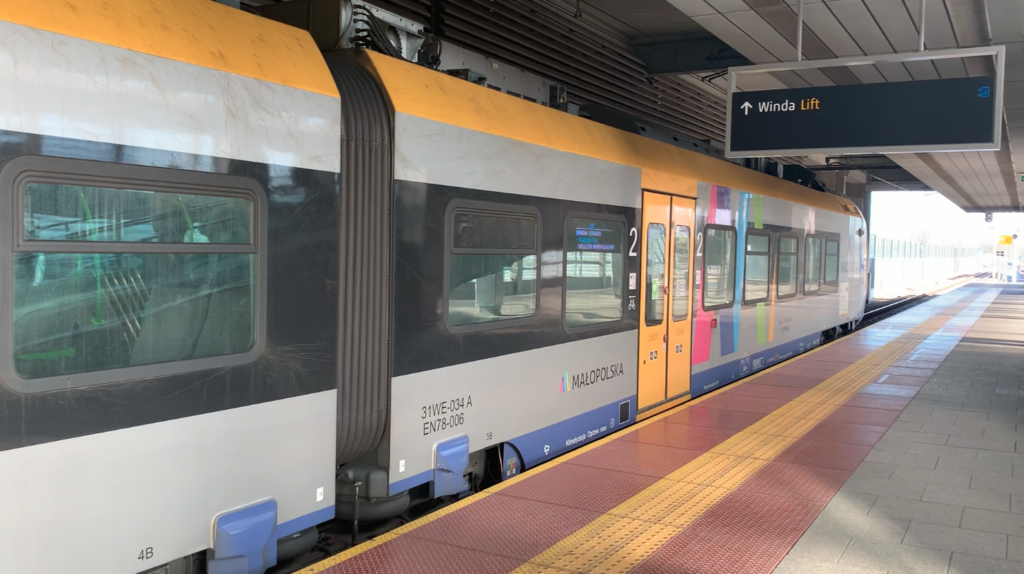
The origin of the ETZ “Impuls”.
Newag Impuls is a family of passenger EZT trains built by the Newag plant in Nowy Sącz. The plant was established in 2005, based on the Railway Rolling Stock Repair Plant. Newag won the tender for the construction of six EZT type 14WE for the Fast Urban Railway in Warsaw. The trains were given numbers from 14WE-01 to 14WE-06. In addition to these six trains, a single copy of the “Papieski” train type 14WE-07 was built, and marked on PKP as EN61-001.
The ETZ type 14WE is a train based on the iconic EN57 series, consisting of three wagons. The mainstay of the wagons, the wagon bogies and their traction engines remained unchanged. The train body was completely changed. The vehicle was equipped with glued aluminium sheet cladding and elements made of stainless steel and plastic sheets. The windows are glued. The carriages are connected using accordions without additional walls, similar to articulated buses. Each carriage has two automatic doors on each side. An opening step, which is used for low platforms, has been installed under each door. Driver’s cabins are located at both ends of the ETZ, which are accessed through internal doors from the passenger cabin. Both ends of the train have an aerodynamic shape. All the headlights are inscribed in the outline of the train and do not disturb the air flow. Only the automatic coupler protrudes beyond the outline of the train. The driver does not have external rear-view mirrors at his disposal. A camera system has been used instead.
The driver’s and passenger cabins are air-conditioned. The floor along the entire length of the train is on one level. The passenger seats are upholstered with fabric. In general, the seat layout is at the Class 2 level. The passenger cabins have LCD monitors for transmitting railway information. Two half-pantographs are installed on the roof of the middle, engine carriage. Air conditioning systems are visible on the roofs of the carriages. The train is equipped with a monitoring system with image recording. The drive uses electronic control, which makes the train quieter than the traditional ETZ EN57. The brake system uses a new screw-type compressor.
From the very beginning, Newag has been cooperating with Energocontrol from Krakow, which specializes in designing and testing vehicles. Both companies jointly developed the 14WE train. In 2007, Newag, in cooperation with the same company from Krakow, designed a completely new ETZ high-floor train 19WE. Only four trains were built.
Carriers were very interested in the new ETZ trains. However, the requirement for a low floor, like in trams and public transport buses, began to appear. In order to compete with foreign companies, Polish manufacturers decided to develop Polish designs that would meet the new requirements. The first such vehicle was the EZT from the “Elf” family, manufactured in the Pesa plant in Bydgoszcz. Newag also decided to build a vehicle of this type, i.e. with a low floor.
In Nowy Sącz, the first prototype was created, designated type 31WE, i.e. a 4-wagon ETZ. On the night of 18–19 February 2013, during tests on the Central Rail Line, the 31WE train set a speed record for a vehicle of entirely Polish design, reaching 211.6 km/h.
Then the 35WE type, which is a 6-unit train, and the 36WE type, which is a 3-unit train, were developed. After them, the 37WE type, a 2-unit train, was created. The last one was the 45WE type, a 5-unit train. On the night of 28–29 August 2015, the 45WE type set a new speed record with a result of 225.2 km/h. All these trains became one family, which was called “Impuls”.
In addition to the difference in the number of units, the trains differ in the number of entrance doors to individual cars, the layout of seats, the number of toilets, places for people in wheelchairs and with bicycles, the passenger information system, internet access, 230 V sockets and USB sockets.
In addition to electric trains, diesel trains have been created, which are intended for non-electrified routes. The drive is provided by diesel engines built in the form of an MTU block. These are usually 2-unit trains. By the end of 2018, 167 “Impuls” EZTs were ordered, and by the end of 2020, 186 “Impuls” trains were ordered.
In 2020, Newag demonstrated the hit of the Polish industry, which is a hybrid train. In Polish conditions, a hybrid drive is a double drive: electric from the traction network, and when the route is non-electrified, the train runs on an MTU block diesel engine.
The first Newag “Impuls” train.
The construction of the first Newag Impuls train, type 35WE 6-carriage, began in November 2011. The idea was to develop an intercity class train for routes of 200 – 300 km. The train test began in April 2012.
In 2011, work began on the type 31WE 4-carriage. This train was based on solutions used in the ETZ 35WE 6-carriage. In December 2012, the 31WE 4-carriage train was ready. Tests began in January 2013. On the night of 18-19 February 2013, during tests on the Central Main Line, the 31WE type train reached a speed of 201.4 km/h, and during the last test it reached 211.6 km/h, setting a Polish record for vehicles designed and manufactured exclusively in Poland. The 31WE type trains were ordered by the Lubuskie and Zachodniopomorskie provinces for their regional railways.
In September 2013, the first 36WE-001 type, manufactured for the Podkarpackie province, began testing and certification.
The 45WE type, a 5-unit type, was ordered first in November 2014 by Koleje Mazowieckie. In order to speed up testing and certification, a train built for the Zachodniopomorskie province was used, in which the number of wagons was increased to five. After obtaining the certificate, the train was deprived of one unit and handed over to the user as the 31WE type. On the night of 28-29 August 2015, the 45WE-010 train for Koleje Mazowieckie set another speed record on the Central Main Line, reaching 225.2 km/h.
In 2015, construction of the 31WE 4-car train for PKP SKM Trójmiasto began. The problem was that the platforms in the Tri-City are high, which meant raising the floor in the cars. The train had to be redesigned, which was done.
In 2015, Newag won an order for an ETZ for the Italian carrier Ferrovie del Sud Est.
In June 2016, the first train, “Impuls II”, was built, which had 3 cars. The front of the train underwent a minor change. Additionally, external side doors to the driver’s cabins were installed.
“Impuls” for Małopolska.
On August 28, 2013, a contract was signed for the delivery of 19 3-car EZT type 36WE for the Southern Purchase Group, i.e. for the provinces of Małopolska, Podkarpackie, Silesia and Świętokrzyskie. The trains were intended for Przewozy Regionalne, currently PolRegio. 6 trains were intended for the Małopolska province. The first 4 trains were delivered in September 2014. The trains carried passengers from October 1, 2014. The vehicles were directed to service the routes from Krakow to: Tarnów, Rzeszów, Kielce and Katowice. Each of the “Impuls” trains received its own name: Galicja, Jagiełło, Krak, Podhalańczyk, Trzy Korony and Góral. The “Impuls” train type 31WEa, 4-car in Małopolska is marked EN78. After some time, two more trains of this type were acquired.
On March 30, 2016, a contract was signed for the delivery of 8 EZT type 31WE 4-car and 5 ETZ type 45WE, 5-unit for the Marshal’s Office of the Małopolska Province. The trains were ordered for the Fast Agglomeration Railway. In September 2016, the first two EZT were delivered: 31WE-029 and 45WE-014. Then, more trains were delivered and from December 2016, they began carrying passengers. In February 2017, the last ordered ETZ was delivered.
In June 2020, another 9 ETZ “Impuls” 31WE 4-wagon were ordered.
The structure of the “Impuls” train.
The “Impuls” train is a standard gauge Electric Multiple Unit with a lowered floor. The floor is normally at a height of 760 mm, from the railhead.
The train is made as Class 2. The train does not have doors between cars, i.e. it is made as a single-space. The interior is adapted to the needs of the customer. The number of entrance doors may vary; one or two on each side of the car. Different passenger seat arrangements are used. Folding seats can also be installed. There may be a closed toilet in the passenger space. Usually, there is one toilet in the train, also adapted for the disabled. There may be space in the train for passengers with limited mobility, large luggage or a bicycle. Near this zone there is a door with a folding platform for the entry of wheelchairs. The vehicles can be equipped with an internet access point, electrical sockets, ticket machines, ticket validators and a passenger counting system installed in the doors. The vehicles have a passenger information system in the form of loudspeakers, monitors and light direction boards. The trains have monitoring, air conditioning and heating with automatic regulation.
There is an engine compartment between the driver’s cabins and the passenger compartment.
The trains are powered by 4 or 8 asynchronous electric motors, with power from 400 kW to 500 kW. That is why there is a lowercase letter “a” in the train type. The motors are controlled by inverters. The design speed of the train is 160 km/h, and the acceleration is 1 m/s2. In the 2, 3, 4 and 5-carriage versions, the first and last bogies are 70RSNe type driving bogies. Each bogie has one engine on the axle. Jacobs type bogies, type 72RSTc, are placed between the cars. The ends of two cars rest on one bogie. The wheel diameter is 0.84 m, which allows for a significantly lower floor in the inter-carriage passage. The Knorr-Bremse braking system was used.
The 6-car version has a slightly different design. The last bogie of the third car and the first bogie of the fourth car are power bogies. There is no Jacobs bogie here. Additionally, in the compartment, in this place there are electrical cabinets. Therefore, passengers have only a narrow corridor to pass from the third to the fourth car.
All cars are 2.84 m wide. The height of the cars is 4.15 m. Each train has two half-pantographs.
The type 31WEa, 4-car train of the Malopolska Railways has a 1-2-2-1 door arrangement. The doors are of the “jump-sliding” type. The number of seats is 184 + 16. The train is 74.40 m long. 4 x 500 kW engines. The train has air conditioning, space for bicycles, 230 V sockets, WiFi, toilet. The interior of the car is gray and green. The seats are upholstered in grey fabric. All handles are painted green. The “Impuls” type 31WEa, 4-car train in Małopolska is marked EN78.
The type 36WEa, 3-car trains of the Małopolska Railways have a 1-2-1 door layout. The number of seats is 138+6. The train is 58.40 m long. 4 x 400 kW engines. The train has air conditioning, space for bicycles, 230 V sockets, WiFi, and a toilet. The “Impuls” type 36WEa, 3-car train in Małopolska is marked EN64. Interestingly, the Bydgoszcz Pesa train is also marked EN64.
The type 45WEa, 5-car trains of the Małopolska Railways have a 1-2-2-2-1 door layout. The number of seats is 230+20. The train is 90.40 m long. Engines 4 x 500 kW. The train has air conditioning, space for bicycles, 230 V sockets, WiFi, toilet. The “Impuls” train type 45WEa, 5-carriage in Małopolska is marked EN79.
Written by Karol Placha Hetman
